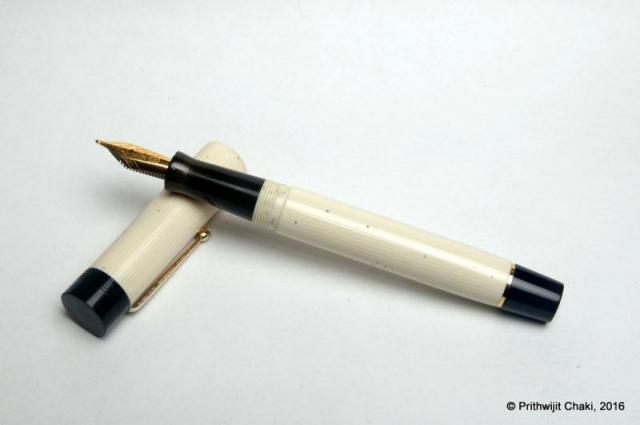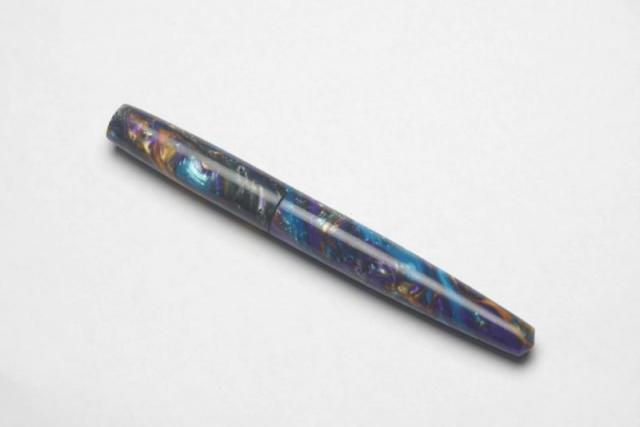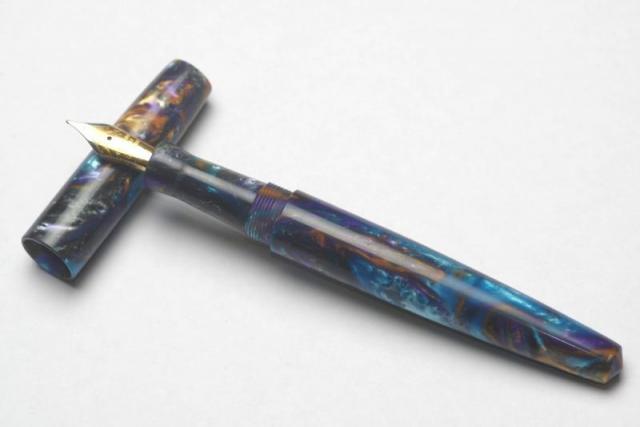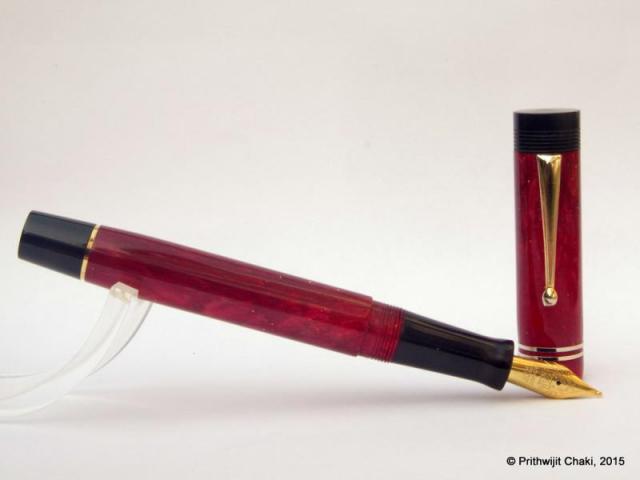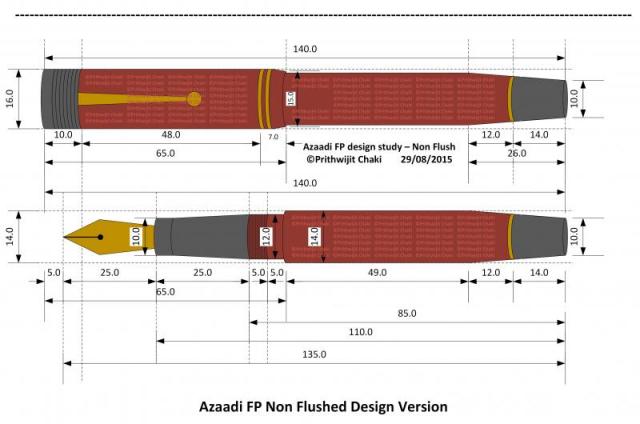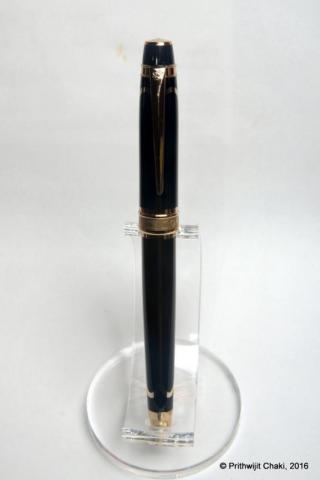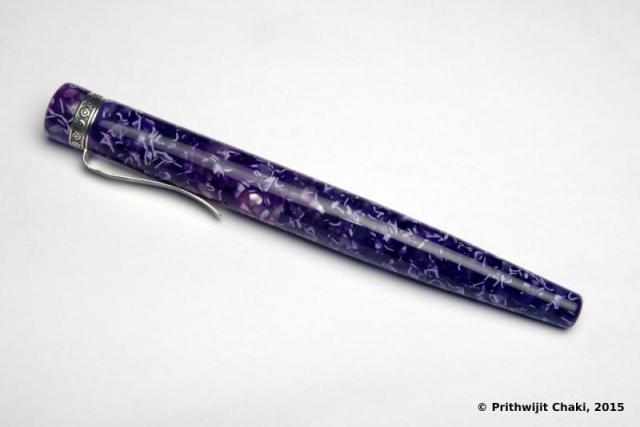Search the Community
Showing results for tags 'prithwijit'.
-
Introduction I had always wanted a Bamboo/Sugarcane shaped pen and had stocked up on materials that represent the colour of green and ripened sugarcane material. When fellow FPNer Sanjay Ramaswamy (@Sanjay13leo) got to know of my desire, he proactively reached out to Mr.Kandan of Ranga Pens to comm...
- 68 replies
-
Introduction I recently had an opportunity to act as an enabler by helping a colleague and friend of mine acquire a special custom fountain pen. This particular gentlemen has a very fine collection of writing equipments including models from almost all premier brands and certainly a few Parkers. Bu...
- 19 replies
-
- prithwijit
- review
-
(and 8 more)
Tagged with:
-
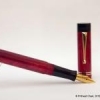
Vintage Indian Pens With Hand-Crafted Gold Nibs
Prithwijit posted a topic in India & Subcontinent (Asia)
Prologue Long before the likes of Romilo and Scriptorium reintroduced and popularized the concept of hand-crafted gold nibs customized to individual tastes & needs, there has been a set of small dedicated Indian handmade pen-makers who have been diligently doing the same out of there small workshop...- 15 replies
-
- prithwijit
- review
- (and 7 more)
-
Introduction After commissioning some customized designs via ASApens I decided to change track a bit and get a few of their standard offerings. Looking around, there seemed to be a few models that had got consistently good review in FPN. One of them was the I-Can design which has been reviewed favo...
- 22 replies
-
- prithwijit
- review
-
(and 3 more)
Tagged with:
-

Review Of Fosfor Rajendran (Aka Desi Kop) With Jowo #8 Gold Nib
Prithwijit posted a topic in Fountain Pen Reviews
Introduction During the early phases of my renewed fascination for all things fountain pens there was one model that reigned supreme amongst my list for grail pens and that was the Sailor King of Pens. Everything about it seemed to be just about perfect – the torpedo shape, the ebonite material and... -
Introduction The cigar shape has been an all-time fountain pen classic. Whether it is the Sheaffer Balance of 1920s or modern Meisterstruck or KOP, the shape has an enduring appeal and is often the signature design for top of the line pens from their respective pen marques. The shape and form have...
-
Introduction Halwa / Halva (Bengali: হালুয়া) is a famous and traditional sweet of India which is slightly gelatinous and made from grain flour, typically semolina. The primary ingredients are clarified butter, flour, and sugar. So why would anyone name a pen after a confectionary item? The story...
-
Casein (from Latin caseus, "cheese") is a milk protein which we widely consume in various forms such as cheese and as a food additives. An interesting anecdote in the story of Caseins is that it was a popular ingredient for making some of the earliest plastics called Casein plastics. For a very brie...
-
Introduction The sniper is a pen with very interesting history and one that has very close ties with FPN. The pen was launched as a group buy back in February 2015 by as a collaboration between ASApens and Vaibhav (@Mehandiratta) as just a concept without any drawing or prototype. Many enthusiastic...
-
Introduction The story of this pen begins ironically with the story of my perception of a completely different pen brand which happens to be Pelikan. For quite some time there was a lot of enthusiasm in the “Fountain Pen Pals India” WhatsApp/Telegram group with people espousing the greatness of the...
- 12 replies
-
- asa
- prithwijit
-
(and 3 more)
Tagged with:
-
Hi everyone, this is my first attempt at a fountain pen review and I have decided to review the ASA Bheeshma which is a custom design that ASA pens has made based on my request. Since this is my first effort, please go easy on the brickbats. Constructive criticisms however are always welcome. Intr...
-
Introduction Recently my interest in all things fountain pen related has spawned a specific sub-genre - a fascination for experiencing nibs made of different materials such as gold, titanium, palladium, etc. Looking around, it seems that the Bock 250 triple system is the ideal platform for experien...
- 16 replies
-
- prithwijit
- review
-
(and 5 more)
Tagged with:
-
Introduction Often in life one learns to appreciate the value of something only after the object is long gone. In my case, something along the same lines happened for Conway Stewart pens. One fine evening in July of 2015 I chanced upon a store selling off the last few Conway Stewarts they had in st...
- 27 replies
-

2015 New Model Hero Classic 100 (Aka Hero Glorious) Review
Prithwijit posted a topic in Fountain Pen Reviews
Introduction Why would anyone be mad enough to splurge $49 on a Hero 100 fountain pen, especially a Hero 100 variant that you have neither seen nor heard of? You do so because Soumitra Sanyal (@sanyalsoumitra) himself recommends it and offers to buy it for you from China during his visit there. For...- 10 replies
-
- prithwijit
- review
-
(and 4 more)
Tagged with:
-

Review Of Fosfor Islander In Conway Stewart Flecked Amethyst
Prithwijit posted a topic in Fountain Pen Reviews
Introduction Manoj Deshmukh of Fosfor pens (http://www.fosforpens.com) is a master pen turner and I always wanted a pen made by him. Given that the Islander model is considered the flagship of his line, it is only natural that I would like to have one of those in my modest collection. Normally Is...- 21 replies
-
- prithwijit
- review
-
(and 4 more)
Tagged with:
-
Introduction “A lot can happen over coffee” screams the tagline of Café Coffee Day which is a renowned café chain in India. While I may not know much about what else can happen over coffee, I am about the narrate the story of a pen that came into being thanks to a little chit-chat over the brew. I...
- 21 replies
-
- schmidt
- prithwijit
-
(and 3 more)
Tagged with:













